When you start reading about safaris in Africa for the first time you can soon be hit with some lingo that you’ve never heard before. When I discuss safaris with potential clients and publilsh content on this website I try to keep things as easy to understand as possible, but I can get carried away and forget that not everyone is familiar with the jargon we use.
At times it might seem like a foreign language – and to be fair, some of it literally is a foreign language – but most of what you will hear is English, just not words and terms you are used to.
This blend of English, Afrikaans and local dialects can leave even the most seasoned traveller feeling bewildered. But fear not, my friends, for I have compiled the ultimate guide to help you navigate the jargon of the bush like a pro. Brace yourselves for a wild ride through the wilderness of words!

The A-Z Guide to Safari Terms and Jargon
Jump to Section:
A-C
Amarula
Let’s kick things off with a delightful treat: Amarula, South Africa’s famous cream liqueur made from the marula fruit. This velvety nectar is the perfect way to toast to the start of your adventure, whether as a sundowner or a cheeky addition to your morning coffee (affectionately known as a “ranger’s coffee”). Amarula also makes a good souvenir or gift – although through, er, work-related research I have found that you can buy it very cheaply at Duty-Free when you get back and save yourself the effort of carrying it onto the plane.
You don’t have to tell them where you bought it, just where it is from…Pro tip: Stock up at the duty-free on your way home to save yourself the hassle of lugging it through airports.
Anti-Poaching Units
Anti-Poaching Units are the guardians of the wilderness, dedicated teams that patrol game reserves and national parks to protect wildlife from illegal poaching activities. Armed and highly trained, these units employ a range of tactics from ground patrols to sophisticated surveillance technology. Their work is not only crucial for the survival of endangered species like elephants and rhinos but also for maintaining the balance of delicate ecosystems. The presence of these units often deters poachers, making the areas safer for wildlife and enhancing the experience for safari-goers.
The bravery and dedication of anti-poaching units are a testament to the ongoing battle between conservation and exploitation.
Balloon Safari

Imagine floating serenely above the vast African landscape, watching the world come to life as the sun rises. A balloon safari offers a truly unique perspective, allowing you to soar over the plains and spot wildlife from above. It’s a magical experience, complete with a champagne breakfast upon landing. Just be prepared for an early wake-up call – but hey, you’ll already be on “bush time” by then!
Many places in Africa offer balloon rides, including Kenya, Tanzania, Botswana, South Africa and Namibia.
Banda
Simple yet charming, a banda is the quintessential African bungalow or hut where you’ll rest your head after an exhilarating day in the bush.
The Big Five
Ah, the illustrious Big Five – the lion, leopard, rhino, elephant, and African buffalo. This age-old term originated from the days of big-game hunting (thankfully, now a relic of the past) when these magnificent beasts were considered the most challenging and dangerous to pursue. Nowadays, the only “shooting” you’ll be doing is with your camera, as you tick off these iconic animals from your safari bucket list.
Biltong
No safari snack stash is complete without biltong, the addictively savory air-dried meat that hails from Southern Africa. Whether it’s beef, ostrich, or the ever-popular kudu variety, biltong is the perfect protein-packed pick-me-up for those long game drives.
Binoculars (Binos)
Keen eyesight is a must on safari, which is why a quality pair of binoculars (or “binos,” as they’re fondly called) is an essential tool in your wildlife-spotting arsenal. With these trusty optics, you’ll be able to zoom in on even the most elusive of creatures from a respectful distance.
Boma
A boma is generally an area where dinner or pre/after-dinner drinks are enjoyed. Imagine dining under a blanket of stars, the crackling flames of a roaring fire casting a warm glow over a traditional enclosure. This, my friends, is the boma – a beloved safari tradition where you’ll feast on sumptuous meals while immersed in the sights and sounds of the African night.
Braai
If you find yourself invited to a braai, consider yourself lucky! Akin to a barbecue. this quintessential South African tradition involves cooking meat over an open fire, often accompanied by lively banter and friendly competition among the braai masters. It’s not just a meal; it’s an experience and appears to be something of a male rite of passage… And a braai just isn’t considered a braai if cooked on a gas grill – or if it’s not meat you’re cooking. The fire also remains lit for the duration of the braai, even after the food has been cooked.
The Bush
Ah, the bush – that magical realm where your safari adventures unfold. This all-encompassing term refers to the vast expanses of savanna, grassland, and woodland that are home to Africa’s iconic wildlife. Prepare to immerse yourself in the sights, sounds, and scents of this untamed wilderness.
Bush Breakfast/Bush Dinner

Why dine indoors when you can savor a meal amidst the splendor of the African bush? A bush breakfast or bush dinner is a truly unforgettable experience, where your guides will set up a picturesque al fresco dining area in a scenic location, allowing you to soak in the sights and sounds of nature as you feast.
Bush Telegraph
The Bush Telegraph is an informal communication network that operates as the lifeline of the African wilderness. It’s how guides, lodges, and camps share instant wildlife sightings, weather warnings, and other vital information. This system ensures that guests can maximize their safari experience by being in the right place at the right time to witness nature’s wonders.
Bushveld
Similar to “the bush,” the term bushveld refers to the savanna or grassland regions of Southern Africa that are teeming with wildlife. It’s a word you’ll hear often, especially when exploring the iconic safari destinations of countries like South Africa.
Camp
In the safari world, the term “camp” is used interchangeably with “lodge,” referring to your home away from home in the wilderness. These cozy accommodations range from rustic tented camps to luxurious lodges, each offering its own unique charm and proximity to nature.
Charter Flight
For those seeking to explore the most remote corners of Africa, a charter flight is the way to go. These small planes will whisk you over the untamed wilderness, providing a bird’s-eye view of the stunning landscapes below and allowing you to reach the most secluded safari destinations.
Conservancy
Conservancies are areas of land managed by local communities or private landowners with the aim of conserving wildlife. They often border national parks and allow wildlife to roam freely between them. Conservancies provide a source of income and employment for local communities through eco-tourism and have a focus on sustainable use of resources. They offer a more exclusive safari experience with fewer tourists and may allow activities like night drives and walking safaris.
Crepuscular
Ever wonder why some animals seem to be most active during those magical hours of twilight? That’s because they’re crepuscular, meaning they prefer to roam when the light is soft and the day is transitioning into night (or vice versa). Keep your eyes peeled for lions and bats during these enchanting periods.
D-F
Deep Tissue Massage (a.k.a. African Massage)
Brace yourself for the ultimate in rustic relaxation: the deep tissue massage, also known as the “African massage.” This cheeky term refers to those bumpy, off-road adventures in your safari vehicle, where every pothole and rut becomes an impromptu therapy session for your back (and your sense of humor).
Diurnal Animals
While some creatures prefer the cover of darkness, diurnal animals are the early birds (and afternoon loungers) of the safari world. These critters, like giraffes, zebras, and hippos, are most active during the daylight hours, making them prime targets for your game drive sightings.
Dorp
If you find yourself in a quaint, rural town or village during your South African adventures, you’ve stumbled upon a dorp. These charming little havens offer a glimpse into the country’s rich cultural tapestry and a chance to experience the warm hospitality of the local communities. Glad you’re enjoying it so far! Here’s the next section covering more safari jargon terms:
Dropping
I’ve mainly heard this used in East Africa, where “dropping” refers to the birth of animals, as in when newborns are “dropped” by their mothers. This is more commonly referred to as “giving birth” or “calving” in the case of elephants, for example.
Dry Season
Also known as peak season or high season, the dry season is often considered the best time for safari adventures. As the vegetation thins out and waterholes become scarce, animals congregate in their masses, making them easier to spot. It’s a prime time for witnessing nature’s greatest shows, like the Great Migration.
Endemic
Hear your guide mention that a particular plant or animal is “endemic”? It simply means that species is native to and found exclusively in that specific region or area. It’s a fancy way of saying “you won’t find this one anywhere else,” adding an extra layer of specialness to your sighting.
Fly-in Safari
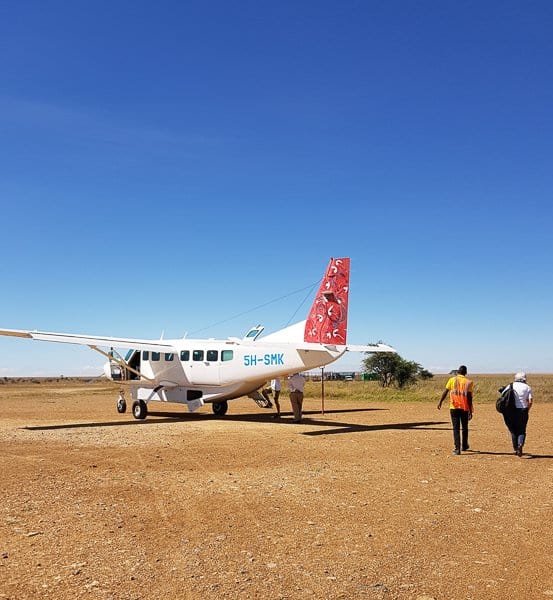
For those seeking to cover vast distances and remote areas, a fly-in safari is the way to go. Instead of spending hours on dusty roads, you’ll hop between wildlife destinations via light aircraft, maximizing your time in the bush and experiencing the thrill of soaring over the untamed landscapes below.
G-I
Game Count
A Game Count is an essential conservation tool, a periodic survey designed to estimate the populations of various wildlife species within a designated area. Conducted by conservationists, park rangers, and sometimes volunteers, these counts are critical for monitoring the health and trends of ecosystems. Data gathered during game counts inform management decisions, including anti-poaching efforts, habitat preservation, and wildlife relocation initiatives.
Game Drive
No safari would be complete without a classic game drive. This is when you’ll pile into a rugged 4×4 vehicle and embark on an exhilarating expedition, guided by expert trackers and rangers, in search of the incredible wildlife that calls the African bush home.
Game Reserves/Wildlife Reserves/Game Parks
These terms are often used interchangeably to refer to privately owned or community-run areas for wildlife conservation and tourism.
However, there are exceptions to this with Moremi Game Reserve in Botswana using the term while being a publicly owned area. It is called a game reserve rather than a national park to denote that the local tribes are allowed to live there.
Gin & Tonic (G&T)

Ah, the beloved G&T – a safari staple and the perfect way to toast to another day of adventure. This refreshing highball cocktail, comprising gin and tonic water poured over ice, is the quintessential sundowner drink, best enjoyed while watching the sun dip below the horizon.
The Great Migration
Prepare to witness one of nature’s most awe-inspiring spectacles: the Great Migration. This annual event sees over two million wildebeest, zebras, and gazelles make the epic journey between the Serengeti in Tanzania and the Masai Mara in Kenya, following the rains and lush grazing grounds. It’s a wildlife phenomenon like no other, complete with dramatic river crossings and predator-prey interactions.
Green Season
While the dry season may be peak safari time, the green season (also known as the low or rainy season) offers its own unique charms. This is when the landscapes are lush and verdant, newborn animals are abundant, and you can take advantage of great travel deals. It’s a secret many seasoned safari-goers swear by.
This is the perfect time to explore a country at its greenest and quietest, when nature is in its fullest bloom. Wildlife may be harder to spot among the abundance of new leaves and tall grass, but this is more than made up for by the lack of other visitors and spectacular photography opportunities.
Guide/Field Guide
The African wilderness can be tricky to navigate on your own – which is where the guides come in. These experienced individuals (often referred to interchangeably as rangers, particularly the male guides) accompany guests on their safari adventures around the reserve, whether it be a nature walk or game drive. They provide interesting and educational insights into all the elements of nature and wildlife surrounding you. Think of them as your personal tour guide through Africa.
According to the dictionary, a safari guide is “a person who advises others, especially on matters of animal behavior on an expedition to study animals in their natural habitat.” The ranger or African guide is a trained expert that will not only track wild animals to maximize your wildlife photo opportunities but also ensure your safety and enthral you with their deep knowledge and stories of the bush.
Hakuna Matata
This Swahili phrase, meaning “no problem” or “no worries,” perfectly encapsulates the laidback, easygoing spirit you’ll encounter on your safari adventures. When faced with any minor hiccups or delays, you’ll likely hear your guide or fellow travelers utter this beloved expression – a reminder to embrace the unhurried rhythm of life in the African bush.
Hides
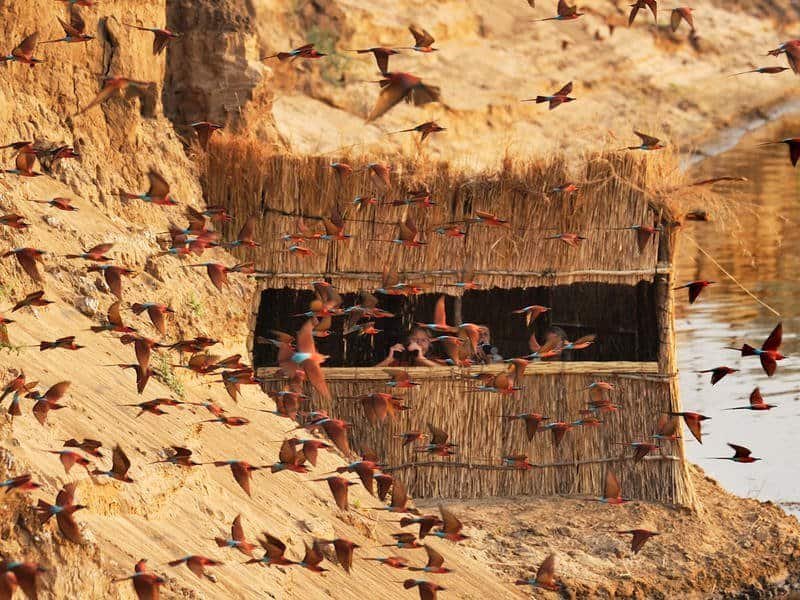
For the ultimate in up-close wildlife viewing opportunities, many safari lodges and camps offer hides – camouflaged or semi-subterranean shelters that allow you to observe animals as they pass by or stop for a drink at a waterhole. These discreet viewing points are the perfect spot to snag that coveted close-up shot of your favorite creatures in their natural habitats.
High Season
Also known as peak or dry season, the high season refers to the time when Africa is at its prime for safari action. Popular destinations see high visitor numbers during this period, as it provides excellent game viewing opportunities, including nature’s grandest spectacle – the Great Migration.
During the dry months (Africa’s winter), grasses are low, and waterholes offer vital refreshment, making animals easier to spot. You’ll enjoy milder daytime temperatures and a variety of activities, from guided bush walks to fishing. In the Okavango Delta, water levels rise, transforming the landscape and beckoning boat rides through meandering channels. In East Africa, the Great Migration unfolds, with more than two million animals crossing the Serengeti-Mara ecosystem.
A high season safari can be combined with other highlights, such as the sardine run on South Africa’s wild coast or the whale migration. Interestingly, winter brings rain to the Cape Town area, signaling the flowering season for the famous fynbos. And at this time of year, Victoria Falls runs with such explosive force that it’s often only seen as a misty veil.
Indigenous
When your guide describes a plant or animal as “indigenous,” they simply mean that it is native to and originates naturally from that particular region or environment. Animals like the pangolin, hyena, and Cape buffalo are all indigenous to various parts of Africa, adding an extra layer of specialness to your sightings.
K-M
Khaki Fever
Yes, it’s real, and no, there’s no vaccine. On safari, you might find yourself afflicted with a case of “khaki fever” – an undeniable attraction to the rugged, khaki-clad rangers and guides who lead your adventures. It’s a phenomenon as old as the safari itself. The good news is that the fever usually breaks once you leave the bush, although you might meet some who never quite recovered, and remain in the wilds.
Koeksister
No trip to South Africa is complete without indulging in a koeksister, a delightfully sticky and syrupy treat that’s essentially a fried dough donut. These sweet, plaited confections are the perfect pick-me-up after a long day in the bush (or anytime, really – we won’t judge!).
Kopje
Imagine a rocky outcrop rising from the vast, flat plains, providing a striking contrast to the surrounding grasslands. This, my friends, is a kopje (pronounced “copy”), a Dutch word referring to these small hills or islands that dot the landscape. Kopjes are a favorite hangout for lions, who like to lounge atop the rocks and survey their domain.
Koppie
Alternative spelling for kopje.
Kraal
A kraal is a traditional enclosed village or homestead found in rural areas of Southern Africa. These circular settlements, often made of wood, mud, and thatch, offer a glimpse into the region’s rich cultural heritage and a chance to experience the warmth of local hospitality.
Lodge
When it comes to safari accommodations, a lodge refers to a more permanent, structured dwelling, often made of concrete, stone, or wood. These rustic-yet-chic abodes range from cozy bungalows to lavish suites, providing all the amenities you need for a comfortable stay in the bush.
The Little Five
You’ve heard of the Big Five, but have you met the Little Five? This cheeky group comprises the ant lion, leopard tortoise, buffalo weaver, elephant shrew, and rhino beetle – tiny yet fascinating creatures that add an extra element of fun to your safari adventures.
Long Rains
In certain parts of Africa, the long rains refer to extended periods of heavy downpours that usher in a season of renewal and growth. While these rains may make some safari activities a bit trickier, they also bring the landscapes to life and attract an abundance of newborn animals – a true treat for nature lovers.
Low Season
Also known as the green season, the low season is when Africa sees fewer visitors on safari. But don’t let the name fool you – this can be an incredible time to explore, with lush landscapes, newborn animals, and great travel deals to take advantage of. It’s the safari world’s best-kept secret! Absolutely, let’s dive deeper into the captivating lexicon of the bush!
Mark My Territory
A delightfully euphemistic phrase you might hear on safari is “mark my territory.” No, it doesn’t involve establishing dominance over the wildlife (though your newfound knowledge of safari lingo might grant you some bragging rights). Rather, it’s a polite way of saying you need to find a private spot to answer nature’s call and, well, relieve yourself outdoors. It’s all part of the authentic bush experience!
Midden
You might encounter some peculiar-looking heaps or areas during your safari adventures – those would be middens, or communal defecation sites for animals like white rhinos. While not the most glamorous of sights, middens offer a fascinating glimpse into the behaviors and social dynamics of these magnificent creatures.
Mobile Camp
For the ultimate in luxury and flexibility, consider a mobile camp experience. These lavish tented affairs are inspired by the vintage camps of early European explorers, offering all the creature comforts of a lodge while allowing you to follow the movement of wildlife across the plains. It’s like having your own personal safari entourage!
Mokoro
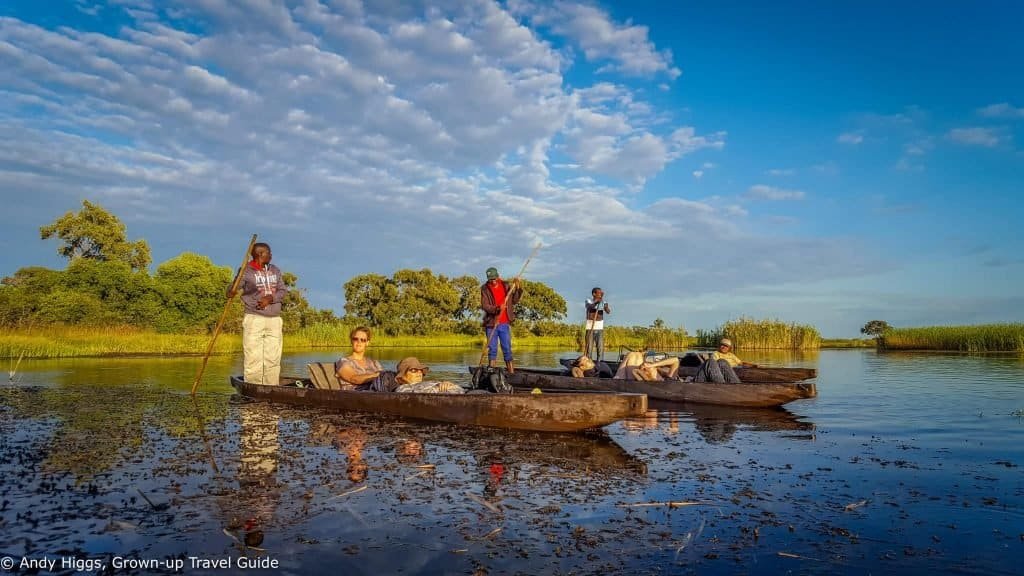
In the watery wonderlands of places like the Okavango Delta, you might find yourself gliding along in a mokoro, a traditional dugout canoe propelled by a skilled navigator with a pole. It’s a serene and immersive way to explore the waterways and get up close to the incredible wildlife that calls these aquatic habitats home. Just mind your balance, or you might get closer than planned.
National Park
National Parks are large, publicly-owned protected areas established by the government. They are set aside for the conservation of wildlife and natural habitats and are often open to the public for recreation and enjoyment. National parks typically have strict rules to protect the environment and wildlife, including restrictions on off-road driving and night-time activities.
They may have a variety of accommodations and are usually more affordable compared to private options. Examples include the Serengeti National Park in Tanzania and Kruger National Park in South Africa.
N-R
Night Game Drive
While many animals slumber during the day, the bush truly comes alive at night. A night game drive allows you to experience this nocturnal world, with expert guides using powerful spotlights to reveal the secret lives of creatures like leopards, aardvarks, and those mischievous honey badgers.
Nocturnal Animal
Speaking of the creatures of the night, nocturnal animals are those that prefer to prowl and hunt under the cover of darkness. From the elusive aardvark to the wide-eyed bushbaby, these fascinating beings are the stars of those thrilling night game drives.
Open Borders/Open Fences
In certain private reserves, you might hear about “open borders” or “open fences” – areas where the boundaries between the reserve and a larger national park or game reserve are unfenced, allowing wildlife to roam freely between the two. It’s a win-win situation, providing guests with a seamless safari experience while promoting animal conservation and migration.
Pap
No introduction to safari cuisine would be complete without mentioning pap, a traditional maize-based porridge that’s a staple in many parts of Southern Africa. Hearty, comforting, and often served with delicious meat or vegetable stews, pap is the ultimate bush-friendly comfort food.
Photography Bean Bag
For shutterbugs looking to capture the perfect wildlife shot, a photography bean bag is an essential piece of safari gear. These sturdy bags can be used to stabilize your camera on the move, providing a steady base for crisp, blur-free images – even when your safari vehicle is bouncing along the rugged terrain.
Pole Pole
You can’t spend time in Kenya or Tanzania, in general – without hearing the phrase pole pole – it’s Swahili for “slowly, slowly.” But it’s more than that – it’s an attitude. After all, what’s the big rush anyway?
Private Concessions
Private concessions are areas of land leased from the government by private safari operators within or adjacent to national parks, run like private reserves but on public land. They offer a more controlled and exclusive safari experience, with fewer guests and the ability to engage in activities not permitted in national parks, such as off-road driving and night drives.
They often have a limited number of lodges or camps, ensuring a more intimate wildlife viewing experience. Examples: Concessions in the Okavango Delta (Botswana), Concessions in Kruger National Park (South Africa)
Private Game Reserves
Private game reserves are privately owned and managed lands dedicated to wildlife conservation. They offer a high degree of exclusivity and luxury, with controlled access to visitors, usually only those staying at the reserve’s lodges. Private game reserves often allow off-road driving, night drives, and walking safaris, providing guests with close-up wildlife encounters and a more personalized safari experience. They tend to be more expensive than national parks due to their exclusivity and the quality of services provided.
Private/Exclusive-Use
Speaking of exclusivity, an increasingly popular option is booking a safari camp or lodge for private or exclusive use. With this arrangement, you and your travel companions have the entire property to yourselves, complete with a dedicated team of staff, private vehicles, and tailored activities. It’s the ultimate in luxurious seclusion amidst the beauty of the bush.
It is also possible to book just exclusive use of a vehicle for all your game drives, while sharing the camp with the other guests.
Ranger
While this term is often used interchangeably with guide, a ranger is usually an additional member of the team employed to ensure the safety of guests on walking safaris. Usually armed and often soldiers or employees of the park in which they operate, they may also join you on game drives, depending on the area.
Rest Camp
Within the boundaries of many national parks, you’ll find rest camps – rustic accommodations that allow you to stay within the park itself, often with access to basic amenities and facilities. It’s the perfect way to immerse yourself fully in the sights and sounds of the wild.
Rondavel

A rondavel is a traditional African hut, instantly recognizable by its circular shape and conical thatched roof. Many safari lodges and camps incorporate these charming structures into their design, blending modern comforts with the region’s rich architectural heritage.
Rusks
For a true taste of South African tradition, be sure to try rusks – twice-baked bread or biscuit-like treats that are perfect for dipping into your morning coffee or tea. They’re a beloved breakfast staple and a delightful way to start your day in the bush.
Rutting Season
If you’re lucky enough to witness the Great Migration between April and June, you’ll be treated to the incredible spectacle of rutting (breeding) season. This is when male wildebeest engage in noisy, dramatic battles for dominance and the right to mate, creating one of nature’s most awe-inspiring displays.
S-V
Safari
Of course, no guide to safari terminology would be complete without defining the word “safari” itself. Originating from the Arabic word “safar,” meaning “to make a journey,” a safari is an overland adventure to observe and appreciate the incredible wildlife and natural wonders of Africa.
Safari Vehicle
To traverse the rugged African terrain in safety and comfort, you’ll likely find yourself riding in a sturdy safari vehicle. These are specially modified 4x4s, preferably with open sides, designed to provide an unobstructed view of the surrounding wilderness while complying with strict regulations to ensure your security on game drives.
Sausage Tree
The Sausage Tree, or Kigelia africana, is an iconic feature of the African landscape, easily recognized by its long, sausage-like fruit that dangles from rope-like stems. Native to the savannah regions and riverbanks, its fruit, flowers, and leaves are not only a vital resource for wildlife but are also used in traditional medicines and local customs. The tree’s peculiar fruit can weigh up to 10 kg (22 lbs) and plays a role in various ecosystems, offering sustenance to many species. Beyond its ecological significance, the Sausage Tree is a symbol of the diverse and intricate web of life that characterizes the African wilderness.
Savanna
The quintessential backdrop for many a safari adventure, the savanna is a grassy plain dotted with scattered trees and bushes, found in tropical and subtropical regions. This iconic ecosystem is home to an incredible array of wildlife, all adapted to its cycle of wet and dry seasons.
Self-Drive Safari
For those seeking a more independent and budget-friendly safari experience, a self-drive safari could be the perfect option. In designated reserves and parks, you’ll have the freedom to navigate the trails at your own pace, stopping to admire the wildlife whenever you please – all from the comfort of your own rented vehicle.
The disadvantage of a self-drive safari is the lack of an expert guide to spot animals for you – you can do your best but you’ll definitely be missing out on the whole story.
Furthermore, driving your own vehicle is for more experienced travellers who are confident getting out of sticky situations and know how to behave when encountering wildlife.
Short Rains
While the long rains bring downpours, the short rains refer to the impressive afternoon thunderstorms that roll across parts of East Africa and coastal regions during certain times of the year. These brief but dramatic showers are a spectacular sight to behold, and often provide relief from the heat of the day.
Shoulder Season
In the world of safari travel, the shoulder season refers to that transitional period between the peak and low seasons. It’s a golden window of opportunity for those seeking fewer crowds, mild weather, and often better deals on accommodations and activities.
Siesta
Even the most intrepid safari-goer needs a break from the midday heat. That’s where the beloved siesta comes in – a midafternoon rest or nap, often preceded or followed by another exciting bush adventure. It’s the perfect way to recharge your batteries and embrace the laidback rhythm of life in the African wilderness.
Special Five
Just when you thought you’d mastered the Big Five and Little Five, along comes the Special Five – a grouping that includes the reticulated giraffe, Grevy’s zebra, Somali ostrich, Beisa oryx, and gerenuk. Spotting these unique and rare creatures is a true feather in the cap of any safari enthusiast.
Spoor
Spoor refers to the tracks, trails, or signs left behind by animals as they move through their natural habitats. These markers can include footprints, broken twigs, droppings, or even distinct smells. Expert trackers can read spoor like a book, interpreting subtle clues to determine an animal’s size, species, direction of movement, and how recently it passed by. This skill is invaluable on safaris, leading guides and their guests closer to elusive wildlife sightings. Spoor tracking is an ancient art, bridging modern safari adventures with traditional knowledge and deepening the connection between humans and the natural world.
Star Beds
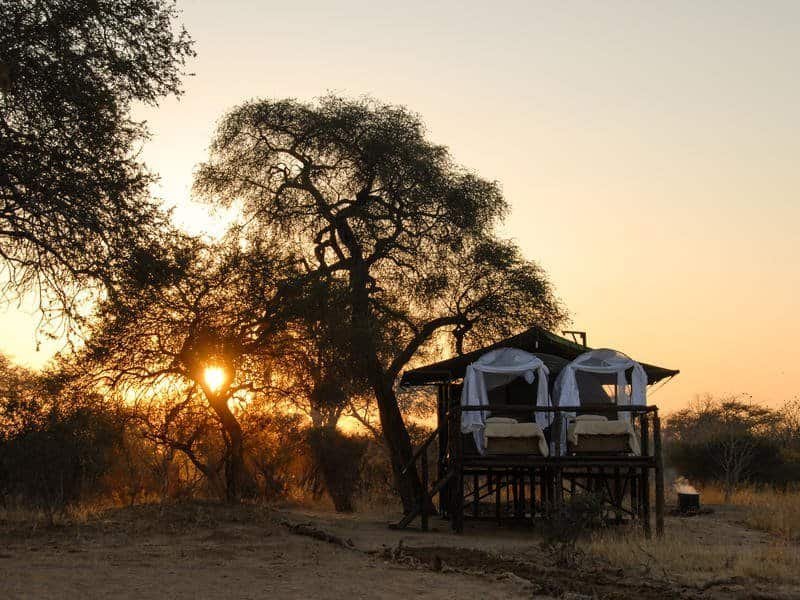
For an absolutely unforgettable experience, consider booking a star bed – a luxurious open-air sleeping platform or treehouse-like structure that allows you to slumber under the brilliant canopy of the Milky Way. With just a mosquito net separating you from the vast African night sky, you’ll drift off to the magical sounds of the bush.
Sundowner
Few safari traditions are as beloved as the sundowner – a late afternoon or early evening pause to enjoy a refreshing beverage (often a G&T) while watching the sun dip below the horizon in a blaze of golden glory. It’s the perfect way to toast another day of adventure in the bush.
Sustainable Travel
In recent years, the concept of sustainable travel (also known as responsible, green, or eco-tourism) has become increasingly important in the safari world. This mindful approach aims to minimize the negative impacts of tourism while promoting wildlife conservation, empowering local communities, and protecting the environment for future generations to enjoy.
Sustainability
Sustainability is a key concept deeply rooted in many African cultures – the idea of maintaining a harmonious balance with nature and its resources over the long term. On your safari adventures, you’ll likely encounter many initiatives and practices rooted in this vital principle.
Tented Camp
For that quintessential “out of Africa” experience, consider staying at a tented camp. These semi-permanent settlements typically consist of sturdy safari tents, a central lounge and dining area, and sometimes even a pool – offering all the comforts of a lodge while keeping you immersed in the sights and sounds of the bush.
Territory
In the context of safari tourism, territory refers to the areas that different animals frequent and defend as their home turf. You might hear your guide explain how lions fiercely protect their territory, or point out the geographic territory of a particular region or country you’re exploring.
Travel Designer/Tour Operator
With over 30 years of experience travelling in Africa, I’ve built up an extensive bank of first-hand knowledge about the destinations, lodges, camps, and activities I recommend from hundreds of safari partners across Africa. I always go above and beyond to craft tailor-made itineraries that meet all your needs, ensuring you have a truly once-in-a-lifetime adventure.
Tracker
In many parts of Africa, particularly South Africa, your safari experience will be enhanced by the presence of a tracker – an expert at reading the land and following animal tracks to locate wildlife. These skilled individuals often work in tandem with guides, combining their knowledge to provide an unparalleled game viewing experience.
Tse Tse Fly
One creature you’ll want to steer clear of on safari is the pesky tse tse fly. These biting flies, found across sub-Saharan Africa, are not only a nuisance but can also spread diseases like sleeping sickness. Heed your guide’s advice and avoid wearing dark colors that might attract these unwanted pests.
Tusker
When an elephant or wild boar sports particularly large, impressive tusks, it earns the moniker of tusker. Spotting one of these magnificent creatures is a true highlight for many safari enthusiasts, offering a glimpse into the majesty and resilience of Africa’s gentle giants.
Tusker is also a beloved beer brand in Kenya.
Twitcher
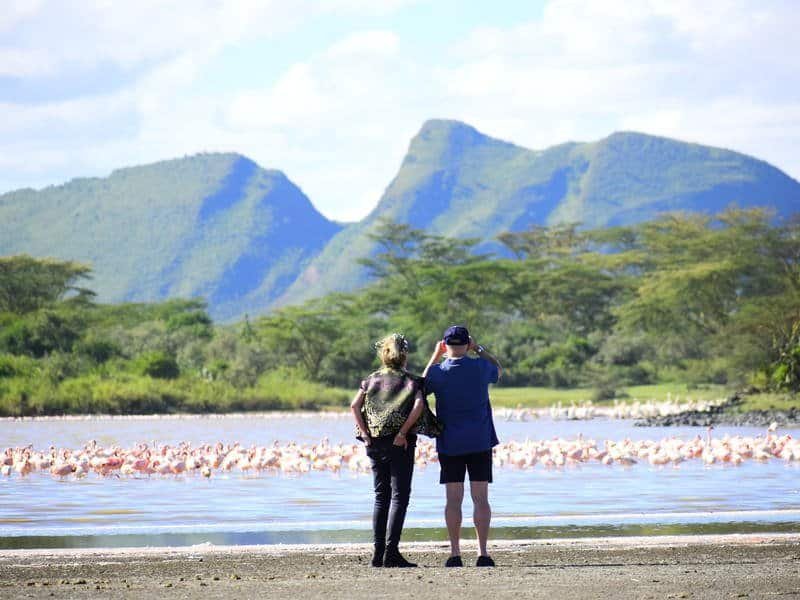
You might encounter some particularly enthusiastic bird watchers on your safari adventures – the kind who travel far and wide to add new species to their life lists. These avid birders are affectionately known as twitchers in British slang, a nod to their dedication to their feathered friends.
Ubuntu
Ubuntu is a beautiful Zulu word that roughly translates to “I am because we are.” It embodies the spirit of interconnectedness that lies at the heart of many African cultures, emphasizing the importance of community, humanity, and our shared existence with all life on this planet.
Ugali
Similar to pap and a staple in many East African countries, particularly Tanzania, ugali is a thick, comforting porridge made from maize or cassava. Traditionally served with hearty stews, curries, or grilled meats, this humble dish is sure to become a beloved part of your culinary safari experience.
The Ugly Five
Looks aren’t everything, especially in the wilderness! The cheekily named Ugly Five group comprises the spotted hyena, warthog, wildebeest, marabou stork, and vultures – creatures that might not win any beauty contests but are fascinating to observe in their natural habitats.
Veldskoen (Vellies)
No safari wardrobe is complete without a sturdy pair of veldskoen (affectionately known as “vellies”). These rugged leather shoes originated in South Africa and were designed for exploring the bush, but they’ve since become a fashion statement adorning the feet of trendsetters from Cape Town to London.
Vlei
In the heart of the African wilderness, you might come across a vlei – a shallow pool or marshy depression that fills with water during the rainy season. These temporary wetlands are vital sources of hydration for wildlife and add to the ever-changing, dynamic landscapes you’ll encounter.
W-Z
Walking Safari (a.k.a. Nature Walk/Bush Walk)
For an up-close and intimate encounter with nature, embark on a walking safari. Led by an experienced armed guide, these slow-paced hikes allow you to immerse yourself in the sights, sounds, and smells of the bush, observing wildlife from a unique vantage point and discovering the smaller details that are often missed from a vehicle.
Water Camp
In stunning destinations like the Okavango Delta, water camps offer a front-row seat to the incredible aquatic ecosystems that thrive in these regions. From gliding along in a mokoro (traditional canoe) to sublime catch-and-release fishing experiences, a water camp promises a refreshing change of pace from traditional land-based safari activities.
Wild Camping/Fly Camping
For the truly adventurous spirit, wild camping takes the safari experience to new heights of authenticity. With just a tent and the barest of essentials, you’ll have the opportunity to immerse yourself in the untamed wilderness, waking up to the sounds of the bush and forging a deeper connection with the natural world around you.
Zebra Crossing
In the safari context, a Zebra Crossing humorously redefines the familiar road marking as the paths used by zebras and other wildlife to cross the terrain. These natural crossings are often hotspots for wildlife activity, offering safari-goers unique opportunities to observe the behaviors and interactions of various species. Unlike their urban namesake designed for human pedestrian safety, these crossings highlight the need for vehicles and visitors to yield to the right-of-way of the wild inhabitants. Witnessing a zebra or a herd at these crossings is a reminder of the untamed beauty of the safari landscape and the importance of coexisting respectfully with nature.
And there you have it, folks – your comprehensive guide to the language of the African bush! Armed with this lexicon, you’ll be able to navigate the jargon like a seasoned pro, impressing your fellow travellers and guides alike with your prowess. So pack your khakis, lace up those veldskoen, and get ready to embrace the wild, wonderful world of safari travel. The adventure of a lifetime awaits!
